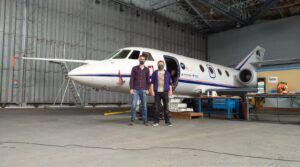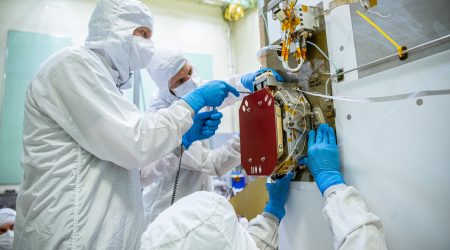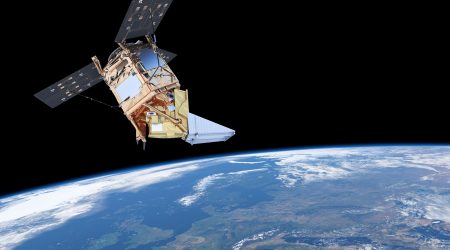SPEX Airborne
Project Instruments
SPEX airborne is a prototype of SPEXone, a spectropolarimeter that is part of the payload for NASA’s PACE mission and a candidate to be part of ESA’s CO2M mission. SPEX airborne has flown onboard NASA’s high altitude research aircraft ER-2 in a number of campaigns and on a Falcon operated by the SAFIRE in Toulouse (see e.g. ACEPOL and SCARBO campaigns). SPEX airborne was realized by the same Dutch team that later developed SPEXone.
Like SPEXone, SPEX airborne is a multi-angle spectropolarimeter for wavelengths between 400 and 800 nm, designed to detect and characterize aerosols in the Earth’s atmosphere. It has nine viewing angles (nadir, +/- 14, +/-28, +/- 42 and +/- 56 degrees) and a 7 degrees across track field of view (at flight altitude 1.5 – 2.5 km swath). The optical bench of SPEX airborne is about 1 liter, with a mass of 1 kg.
In August 2024, SPEX airborne will be deployed in the PACE-PAX validation campaign for PACE. From Edwards Air Force Base in California, SPEX airborne will take off on an ER-2 aircraft to collect data on clouds and aerosols to compare them to the data taken from space by the SPEXone instrument on the PACE satellite. Also the validation instruments for the other two instruments onboard PACE — OCI and HARP-2 — will collect data. In their case also from the ocean. During multiple flights in a total of 60 hours, the aircraft will underfly PACE and overpass ground stations, for simultaneous comparison.

Experts who worked on this project:

Bastiaan van Diedenhoven
Senior Scientist
Otto Hasekamp
Senior ScientistMeet our Partners
Partners-

Airbus Netherlands B.V.
-

NASA
-

NWO
-

TNO
Our project contact
Get in touchWould you like to learn more about this project? Please feel free to contact on of our project experts within SRON Earth.



